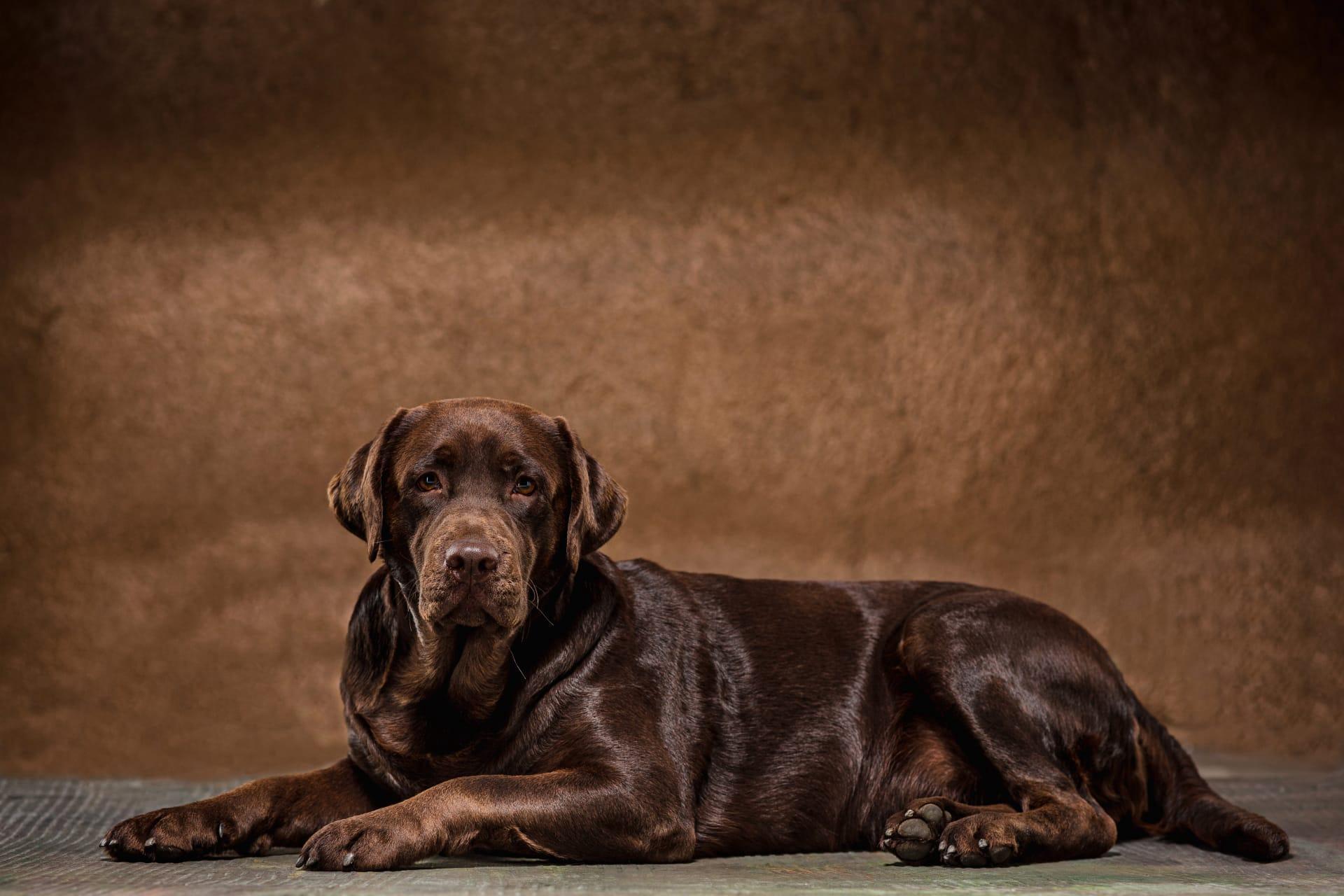Chocolate Lab Trivia
- Home /
- Trivia Question /
- Animal /
- Chocolate Lab Trivia
1
Question: What distinguishes a Chocolate Labrador Retriever's coat color, and how is it genetically determined?
Answer: The rich, warm brown coat of a Chocolate Labrador is the result of two recessive alleles at the B locus. For a Lab to display this captivating chocolate hue, it must inherit the b allele from both parents (bb). This genetic combination suppresses the black pigment eumelanin, allowing the brown color to predominate. Beyond genetics, the coat's depth of color can vary from light silver to a deep, almost black chocolate, influenced by environmental and nutritional factors.
Question: How long do Chocolate Labrador Retrievers typically live, and what are common health issues they face?
Answer: Chocolate Labrador Retrievers have an average lifespan of 10 to 12 years. While they are generally robust and healthy dogs, they are prone to certain health issues more than other colors of Labs due to a smaller genetic pool. These include ear infections due to their floppy ears, hip and elbow dysplasia, heart disorders, and hereditary myopathy. Proper care, regular veterinary check-ups, and a healthy lifestyle can mitigate these risks and contribute to a long, fulfilling life.

2
Question: Is it true that Chocolate Labs are less intelligent than their yellow and black counterparts?
Answer: This is a common misconception. The color of a Labrador Retriever's coat has no scientific correlation with its intelligence. Chocolate Labs, like all Labrador Retrievers, are highly intelligent and capable of being trained for various tasks such as service dogs, hunting companions, and therapy dogs. The perception of intelligence variations among Lab colors may stem from anecdotal observations or individual dog temperament rather than a breed-wide characteristic.
Question: Do Chocolate Labs have a shorter lifespan than other Labrador Retrievers?
Answer: Research and surveys have suggested that Chocolate Labrador Retrievers may have a slightly shorter average lifespan compared to their yellow and black counterparts, often by about a year or so. However, this difference is not solely attributed to the coat color but may be linked to genetic diversity and the prevalence of certain health issues within the color-specific gene pool. Responsible breeding practices and proper care can help ensure the health and longevity of Chocolate Labs.

3
Question: What role does diet play in the health and coat condition of Chocolate Labrador Retrievers?
Answer: Diet plays a crucial role in the overall health and the luster of a Chocolate Lab's coat. A balanced diet rich in omega-3 fatty acids, vitamins, and minerals supports skin health and promotes a shiny, healthy coat. Foods containing fish oil or flaxseed are beneficial for this. Additionally, maintaining an appropriate weight is vital for preventing joint issues and diseases such as diabetes, which Chocolate Labs can be predisposed to.
Question: How much exercise does a Chocolate Lab need?
Answer: Chocolate Labrador Retrievers are energetic and require regular exercise to maintain their health and happiness. They thrive on at least one hour of physical activity daily, which can include walking, swimming, playing fetch, or agility training. Exercise not only keeps them physically fit but also mentally stimulated, helping to prevent boredom and destructive behaviors.

4
Question: Are Chocolate Labrador Retrievers good with children and other pets?
Answer: Chocolate Labrador Retrievers are renowned for their friendly and gentle nature, making them excellent family pets. They are patient and tolerant, which suits families with children. Their sociable demeanor also extends to other pets, including dogs and cats, especially when raised together or properly socialized from a young age. However, supervision during interactions is always recommended to ensure safety for all parties.
Question: What is the importance of socialization and training for Chocolate Lab puppies?
Answer: Socialization and training are critical for Chocolate Lab puppies to grow into well-adjusted adult dogs. Early exposure to various people, pets, and environments helps prevent fearfulness and aggression. Training in basic commands, obedience, and manners is essential for their safety and for managing their exuberant energy. Positive reinforcement techniques are highly effective with Labs, fostering a love for learning and cooperation.

5
Question: Can Chocolate Labs adapt to living in an apartment?
Answer: While Chocolate Labs are adaptable and can live in an apartment, their size and energy levels mean they require ample space to move and regular exercise outside the home. Consistent daily walks, access to a park or open space for off-leash play, and mental stimulation through interactive toys and training can help meet their needs in a smaller living environment.
Question: How do weather conditions affect Chocolate Labrador Retrievers?
Answer: Chocolate Labs are versatile and can adapt to various climates, but they do best in moderate conditions. Their thick coat provides some insulation, yet it's essential to protect them from extreme heat or cold. In hot weather, ensure they have shade and water and avoid exercising them during the hottest part of the day. In cold climates, limit their exposure to freezing temperatures and consider a coat or sweater for extra warmth during walks.